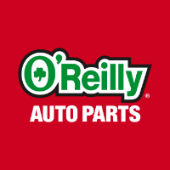-
Welcome to Auto Parts Forum
Whether you are a veteran automotive parts guru or just someone looking for some quick auto parts advice, register today and start a new topic in our forum. Registration is free and you can even sign up with social network platforms such as Facebook, X, and LinkedIn.
REESE Towpower Ball Mount Bar
-
Similar Content
-
- 0 replies
- 22 views
-
- 0 replies
- 39 views
-
- 0 replies
- 26 views
-
- 0 replies
- 26 views
-
- 0 replies
- 43 views
-
-
Similar Topics
-
By Shell91
Hi, I cannot find an engine mount ANYWHERE for my 2.4 litre 2007 Renault trafic. Can anyone point me in a direction where I can get one ? Been to an actual Renault trafic for genuine parts and the guy reckons they don’t make them anymore.
-
By Counterman
When ball joints are on the counter, what’s the No. 1 upsell? Shop rags, latex gloves and floor cleaner, because it’s going to be a messy job!
Seriously, though, it depends on the suspension. For light cars and trucks with strut-type suspension, most ball joints aren’t greaseable, and most of them only have one lower control arm on each side, resulting in only one lower ball joint on each side (multi-link suspensions are another story). Most of these are a cakewalk to replace, and you barely get your hands dirty. But, heavier trucks and older cars with upper-lower A-arm suspension and greaseable joints are a different story. That’s when it gets real.
But before we start wiping up grease, let’s look at two of the stickier aspects of ball joints: inspection and installation. Ball joints have wear specifications, and the maximum allowable play as well as proper inspection procedures can vary considerably between different applications. When checking a ball joint for wear, technically speaking, not only should we confirm the recommended procedure and specifications, but we also are always supposed to check them using a dial indicator. In the real world, that rarely happens.
Most technicians understand that a little bit of play in a ball joint is normal and acceptable. But at the same time, there’s a common misconception that any play in a ball joint means it’s wearing out. The root of the problem goes deeper than this article can cover, but let’s face it: Time is money, and taking the time to look up specs, set up a dial indicator (if you have one) and recording the readings just isn’t realistic, especially when a shop manager is breathing down your neck for a diagnosis.
Another part of the problem is when you check a ball joint for wear, you always can feel even the slightest amount of play – so again, rather than performing the correct procedure, it’s easier to estimate the free play in your mind based on your familiarity with these types of measurements.
You can’t always see the movement when it’s minimal, but the worse it gets, the easier it is to see. Experienced technicians are good at recognizing when the amount of play is still “acceptable,” or when a ball joint is – as we like to call them when the vehicle isn’t safe to drive – “wasted.” When a ball joint exhibits wear but still is acceptable and safe for use, that’s how we represent it to the customer, and we’ll just recommend checking them again at the next service. “Let’s keep an eye on those ball joints,” we might say.
This all might sound like I’m criticizing technicians, but that’s far from the case. I’ve been a tech my whole life and it can be tough to wear our shoes. There’s a lot we need to know – we’re all human – and we do make mistakes. When it comes to parts, we rely on the knowledge of a counterperson more often than you realize. One of the strongest traits of a good technician is understanding that you don’t know everything, and not being afraid to ask questions or accept advice. In the case of ball joints, they usually don’t come with specifications, and there’s rarely any information with them aside from installing the grease fitting. And when they do come with information, does it always get read? You probably can guess the answer. This is the real world of automotive repair.
As crazy as it sounds, when you’re deep into a suspension repair with parts and tools all over the place, it can seem like it takes an eternity to unbox a bunch of parts and remove them from their plastic bags, etc. – so again, it’s no surprise that details are missed should they happen to be included. It’s worth its weight in gold when we learn something we don’t know about any particular part, and we’re always eager to learn.
If the line between misconception and mistake isn’t blurry enough, there’s an extra kicker with ball joints. Some vehicles utilize telescoping ball joints. What this means is that the ball-joint stud telescopes a small amount to compensate for manufacturing tolerances, primarily related to the ears of a steering knuckle.
When you install one of these joints, it may appear as if the stud is too long or too short, potentially causing a technician to think it’s the incorrect joint. Also, since the stud is engineered to slide in and out of the housing, they can exhibit as much as .060” (sixty-thousandths of an inch) of free play. For comparison, .060” is about the thickness of a penny, and while this amount of play rarely would be represented as unsafe, it could easily be misdiagnosed as a worn joint.
This may turn out to be more important in the case of a warranty concern. I’m sure it wouldn’t be the first time you had a part returned as defective and you were surprised by it. This is when your knowledge can save time and money for your company as well as for a technician, shop and the end customer. Information like this often doesn’t make it to a technician level, and it’s a great opportunity for you to educate and build rapport with your customers at the same time.
Replacing Control Arms
Where do control arms come into the picture? Independent suspension, be it front or rear, has been around for a long time. There are many different types, of which upper-lower A-arm, MacPherson strut and multi-link are the most common variations we deal with today. One thing they all have in common is some type of control arm.
To put a simple spin on it, any control arm is nothing more than a link between the fixed frame of a vehicle and the steering knuckle – the component that in turn provides a mounting point for the brakes, wheel bearings and wheels. Control arms move freely up and down in response to suspension movement and not only offer mounting points for springs and sway bars, but they also are integral to suspension design, affecting the alignment angles and suspension travel.
The control arm also carries another distinction: It offers a provision for mounting a ball joint to provide articulation between the arm and steering knuckle. Ball joints are either bolt-on or press-in, and in many cases on newer vehicles, the ball joint is an integral part of the control arm. If you have to replace the ball joint, you have to replace the entire arm.
Control arms are either steel, cast-iron or aluminum, and the most important factor when replacing a press-in style of ball joint is making sure the hole in the control arm isn’t worn. Generally, if there’s no visible damage or corrosion to the control arm and the old ball joint requires considerable force to remove, as long as the new joint requires a similar force to install, the control arm will be OK.
However, since we don’t have the technology (in our shops) to measure the roundness and integrity of the hole, many manufacturers recommend to only replace a press-in style ball joint one time. The next time, the whole arm should be replaced, and this is good advice to pass along to your customer.
As with any type of suspension work, any torque-to-yield fasteners should be replaced, torque specifications always should be utilized, and in the case of control-arm replacement, fasteners should be torqued with the vehicle at ride height.
The post
link hidden, please login to view appeared first on link hidden, please login to view.
link hidden, please login to view -
By Counterman
Bar’s Leaks celebrates its 75th anniversary in 2022.
“What started as a single radiator stop-leak formula in 1947 has grown into America’s most-trusted stop-leak brand,” the company said in a news release.
Over the last 75 years,
link hidden, please login to view products have sealed more than 400 million vehicle-fluid leaks and prevented countless more, saving American consumers billions of dollars in repair bills, the company added. “When a Bar’s Leaks product gets someone back on the road, it doesn’t just save them money, it can also save their day,” explained Clay Parks, vice president of product development. “By stopping more than 400 million leaks, Bar’s Leaks has saved millions of vacations, workdays and date nights. We’ve made it possible to win races, keep appointments and explore the world.”
Bar’s Leaks debuted as a radiator stop-leak invented by Fred Barton in 1947. Today, the Bar’s Leaks brand encompasses stop-leak and repair products for a wide range of vehicle components and systems including cooling, engine, gearbox, hydraulics, power steering, transmission and more. Common applications include cars, trucks, and SUVs; motorcycles and other recreational vehicles; lawnmowers; boats and other watercraft; and agricultural equipment.
The original Bar’s Leaks customers were U.S. automakers that installed it in every car they made to prevent coolant seepage. In 1950, Bar’s Leaks entered the traditional automotive aftermarket, including repair garages. In 1965, distribution was expanded to the retail automotive aftermarket. Today, Bar’s Leaks products are available through distribution and leading retailers nationwide, both online and in person.
The Bar’s Leaks advanced chemical engineering team has continuously improved the product line to maintain pace with evolutions in vehicle design, updating formulas and introducing innovative new products to help drivers keep their cars on the road. The 1996 introduction of engine, transmission and power-steering repair solutions was a significant step beyond cooling-system stop-leaks.
In 2004, Bar’s Leaks revolutionized the automotive repair industry with its new Head Gasket Repair – a chemical solution for blown head gaskets that stopped leaks by repairing the root cause and forming a bond stronger than the actual head gasket itself, according to the company. The brand got a little sparkle with the introduction of Liquid Copper Block Seal, a metallic antifreeze-compatible stop-leak for large cooling-system leaks, in 2008. It was followed in 2010 with the strongest professional-grade, antifreeze-compatible head-gasket sealant Bar’s Leaks has developed: Head Seal Blown Head Gasket Repair.
Recognizing that consumers are increasingly pressed for time, and retailers are pressed for shelf space, in 2019 Bar’s Leaks rolled out Super Leak Fix, the first all-in-one product to stop engine, transmission, power-steering, hydraulic and gear/axle leaks, according to the company. Most recently, last year Bar’s Leaks introduced Gear Repair, the industry’s first treatment designed to extend gear-system life, stop leaks, reduce noise and improve gear performance in automotive, heavy-duty, agricultural, marine and industrial gear oils.
Bar’s Leaks prides itself on making easy-to-use, effective products that can turn regular people into “three-minute mechanics” who can use the products to get back on the road quickly, easily, and inexpensively. To this end, Bar’s Leaks products feature extensive instructions and usage information directly on the bottles. Additional product resources, including installation videos, technical videos, FAQs, product data sheets and more are available on the website at
link hidden, please login to view. Customer support from Bar’s Leaks product experts in Michigan is available at the website, through link hidden, please login to view, or by phone at 800-345-6572. All Bar’s Leaks products are proudly made in the United States. Based in Holly, Michigan, Bar’s Leaks is an ISO 9001-certified company.
The post
link hidden, please login to view appeared first on link hidden, please login to view.
link hidden, please login to view -
By Counterman
Mevotech announced the promotion of Assaf Bar-Menachem as its vice president, product management.
“Bar-Menachem is committed to ensuring that Mevotech is continuously innovating and creating top-quality, technologically advanced automotive parts,” the company said in a news release. “Managing the product coverage volumes and research streams, he has extensive experience in product lifecycle management, supply chain optimization, value-stream mapping and customer satisfaction.”
During his tenure, Bar-Menachem has held several prominent positions, including director, supply chain, and most recently that of director, product management.
Bar-Menachem is and will continue to serve as a member of Mevotech’ s leadership team.
link hidden, please login to view is a Toronto-based manufacturer of driveline, steering and suspension parts for the North American aftermarket. The post
link hidden, please login to view appeared first on link hidden, please login to view.
link hidden, please login to view 
-
By RockAuto
Simply add SKP Motor Mount Kits to your cart and instantly save 10%.View on RockAuto.com
-




Recommended Posts
Join the conversation
You can post now and register later. If you have an account, sign in now to post with your account.
Note: Your post will require moderator approval before it will be visible.